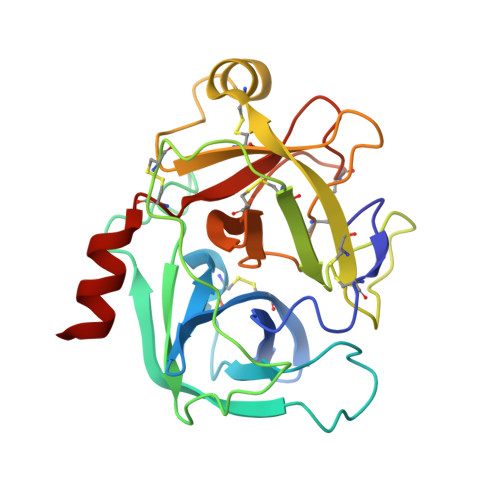Evaluation of a crystallographic surrogate for kallikrein 5 in the discovery of novel inhibitors for Netherton syndrome.
Thorpe, J.H., Edgar, E.V., Smith, K.J., Lewell, X.Q., Rella, M., White, G.V., Polyakova, O., Nassau, P., Walker, A.L., Holmes, D.S., Pearce, A.C., Wang, Y., Liddle, J., Hovnanian, A.(2019) Acta Crystallogr F Struct Biol Commun 75: 385-391
- PubMed: 31045568
- DOI: https://doi.org/10.1107/S2053230X19003169
- Primary Citation of Related Structures:
6QFE, 6QFF, 6QFG, 6QFH - PubMed Abstract:
The inhibition of kallikrein 5 (KLK5) has been identified as a potential strategy for treatment of the genetic skin disorder Netherton syndrome, in which loss-of-function mutations in the SPINK5 gene lead to down-regulation of the endogenous inhibitor LEKTI-1 and profound skin-barrier defects with severe allergic manifestations. To aid in the development of a medicine for this target, an X-ray crystallographic system was developed to facilitate fragment-guided chemistry and knowledge-based drug-discovery approaches. Here, the development of a surrogate crystallographic system in place of KLK5, which proved to be challenging to crystallize, is described. The biochemical robustness of the crystallographic surrogate and the suitability of the system for the study of small nonpeptidic fragments and lead-like molecules are demonstrated.
- GlaxoSmithKline, Medicinal Research Centre, Gunnels Wood Road, Stevenage SG1 2NY, England.
Organizational Affiliation:


















